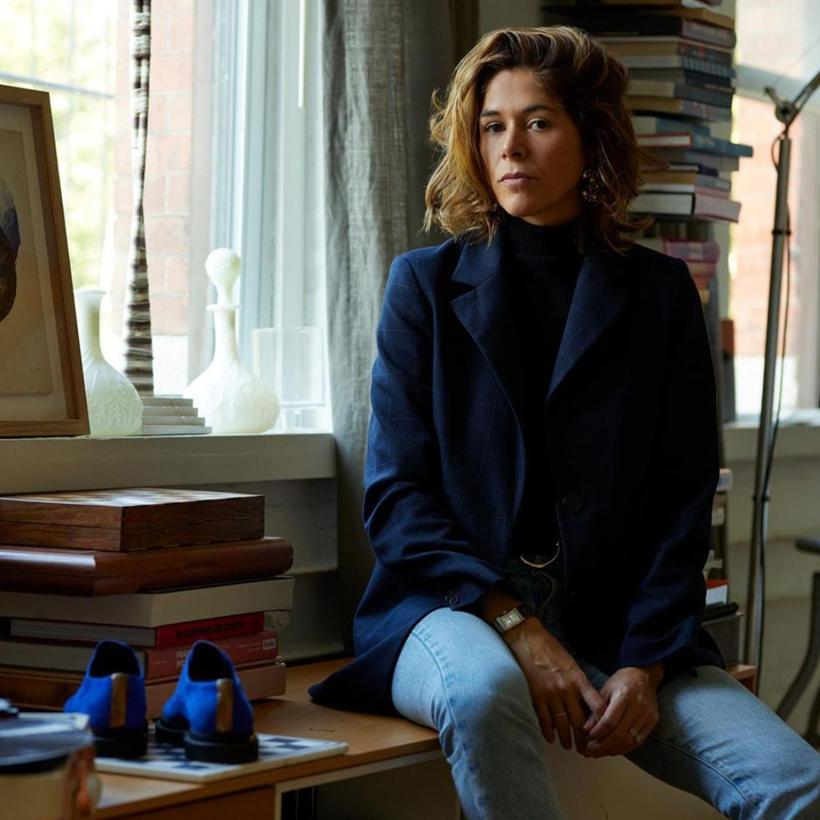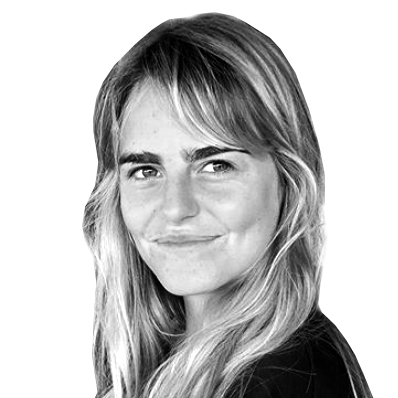Christian Louboutin balked when 25-year-old Marie Laffont showed up to her interview with 100 sketches in tow. “Never again,” he told her. But he hired her anyway.
The Parisian shoe designer, now 35, originally trained to be a lawyer, until her first Celine fashion show changed her mind. “The show started with ‘Good Vibrations,’ by the Beach Boys, and I suddenly knew I’d be a designer one day,” Laffont tells me. True to her word, she quit her law courses at the Université Panthéon-Assas and enrolled at the Chambre Syndicale de la Haute Couture, which counts Karl Lagerfeld and Yves Saint Laurent among its alumni. She worked at French fashion house Sonia Rykiel for a year before earning another master’s, this time at the École Duperré. (“I felt I was lacking an art background,” she says.) There, Laffont studied under luxury-footwear designer Pierre Hardy, who “encouraged my vision, my world,” she says. Laffont credits Hardy with her decision to become a shoe designer.

Fresh out of Duperré, Laffont landed her dream job working for Louboutin in New York, where she headed product development for nearly five years. “He’d give me materials, and I needed to find ways to make them aesthetically beautiful, strong, and fun, but wearable,” she says.
At home, too, art remained a part of Laffont’s consciousness. She married former financier Paul de Froment and convinced him to pursue a career in art, which had always been his passion. Today he runs Almine Rech Gallery’s New York space, and the pair often work as a team.
It shouldn’t come as a surprise, then, that Laffont partnered with French artist Morgane Tschiember for her first namesake collection, which was inspired by Iron Maiden, a lacquered aluminum sculpture of Tschiember’s. The shoes are also reminiscent of Louboutin’s style, but with an artist’s twist.

To present them, Laffont put a catwalk together at Richard Taittinger Gallery, in New York. Fifteen women artists modeled the shoes to live music, having been instructed to dance and “do whatever they wanted.” For her second presentation, Laffont held a more formal event at her husband’s gallery uptown. “I wanted to present the shoes like you’d present sculptures,” she tells me. Since then, Laffont has hosted pop-ups in Miami and New York, and one that opened in Paris last week.
In her apartment in Manhattan’s East Village, Laffont shows me chaotic mood boards for a future collection. “They’re everywhere in the apartment,” she says, laughing. “Each time a new one appears, my husband threatens to divorce me.”
Next up, a collaboration with mixed-media artist Gabrielle Vassallo, launching on Vassallo’s Web site this week. Laffont’s shoes will also be on display as a part of Vassallo’s ongoing exhibition at Neuehouse, in New York. After all, Laffont asks, “why should fine art and fashion exist as two separate things?”
Elena Clavarino is an Associate Editor for AIR MAIL


